A few years ago, a team of researchers in Morocco unearthed rocks carved with what appear to be petroglyphs of meteors crashing through space towards Earth. However, three particular petroglyphs found near Ida Ou Kazzou could suggest that ancient Moroccan people might have actually witnessed martian invaders striking the surface of our planet.
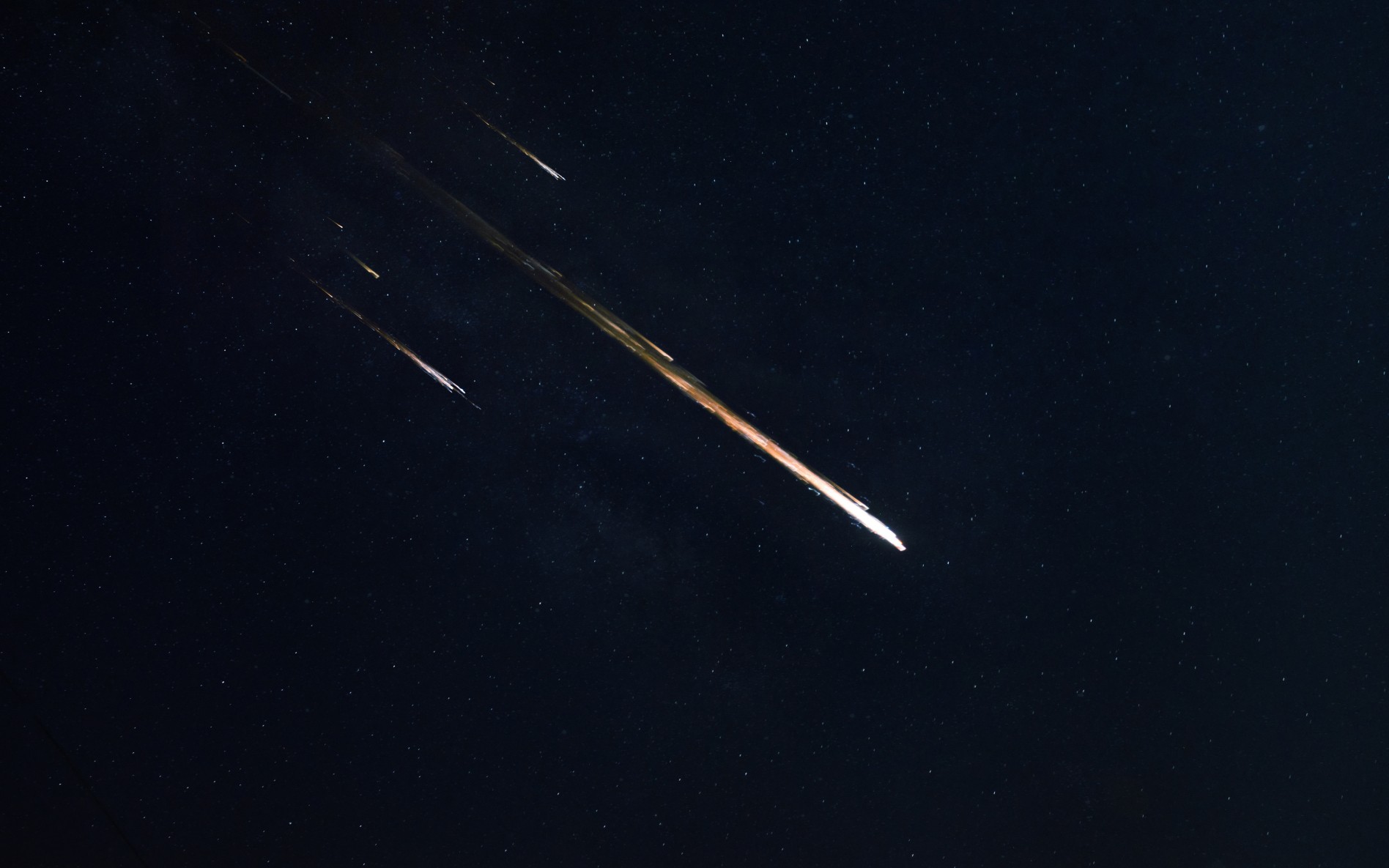
International Meteor Organization (IMO) member Abderrahmane Ibhi from Morocco led the team that also included Fouad Khiri, Lahcen Ouknine, Abdelkhalek Lemjidi, and El Mahfoud Asmahri in the discovery.
The carvings were compared to other nearby petroglyphs, as well as eyewitness accounts of the Tissint meteorite‘s 2011 fall, by Moroccan researchers, who concluded that the petroglyphs date from ancient times, however they could not say how old they are.
Ida1: The first petroglyphs (called Ida1 by the Moroccan research team) offers a scene of two people seemingly distraught by the fall of a meteor.
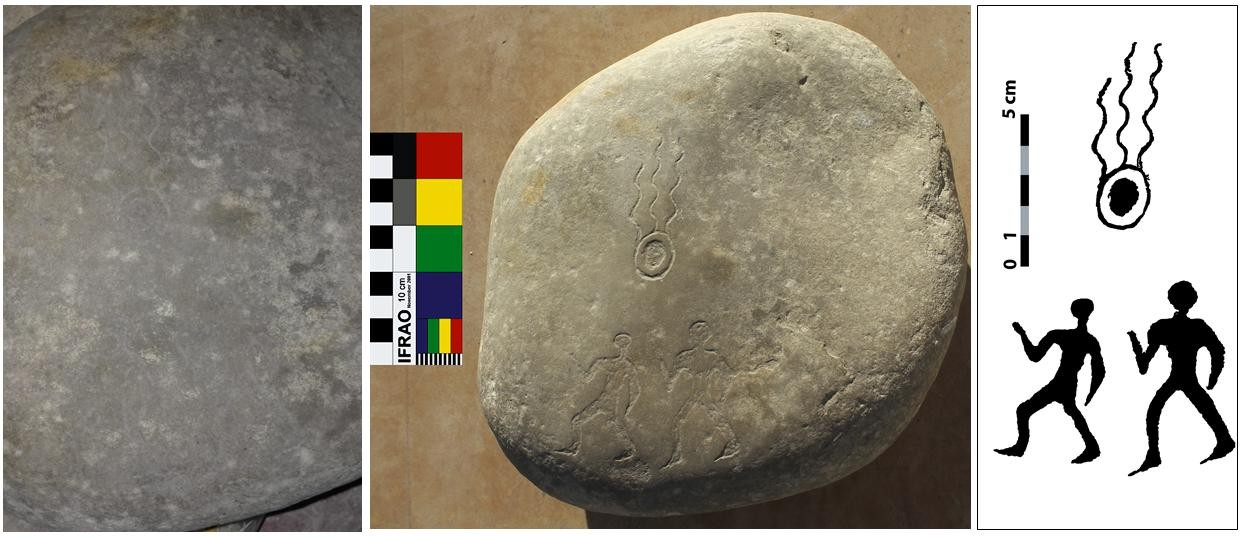
Ida2: Identically on the second one (Ida2), Ibhi and his team identified a scene that includes a fleeing anthropomorphic and what it looks like a huge fireball.
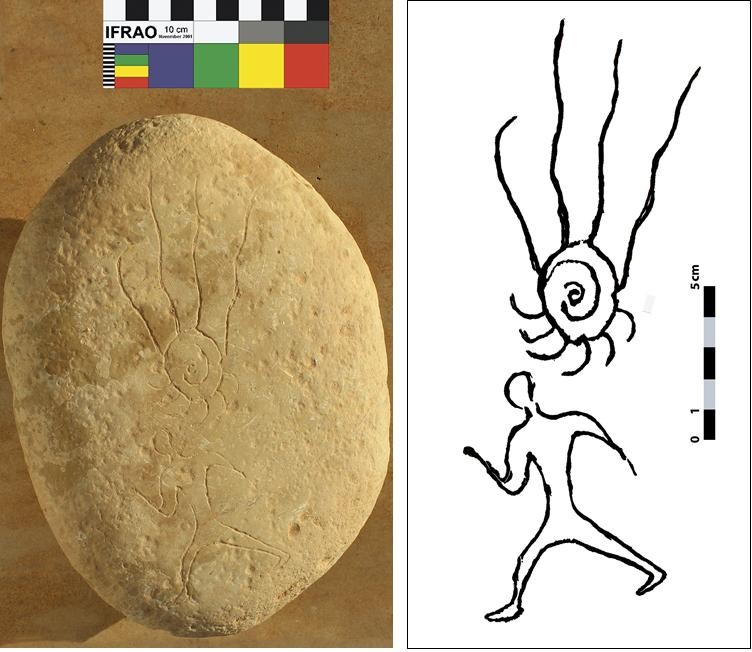
Ida3: On the third petroglyph (Ida3), the engraved scene includes an anthropomorphic, two cattle of different sizes, what it looks like a meteor, and a figurative representation of the Sun with concentric circles in the center.
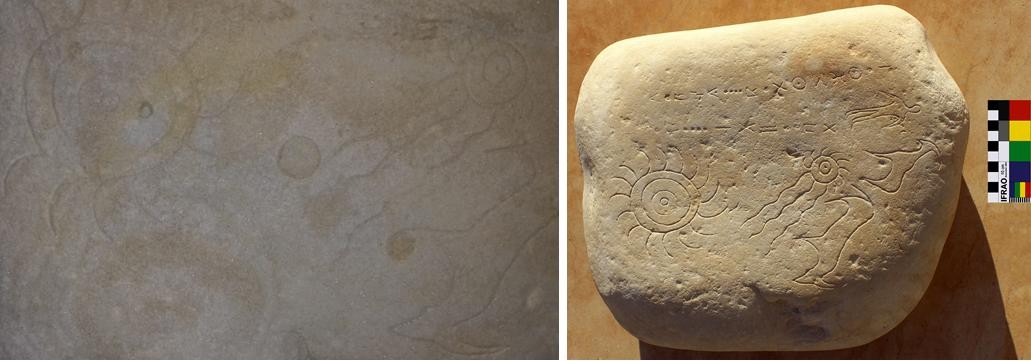
Abderrahmane Ibhi and his team found striking similarities between the typology of these artifacts and the meteor etching found in Toca do Cosmos in the state of Bahia, Brazil and the rock painting found in the Fouriesburg region of South Africa. A meteorite fall is what both artifacts appear to depict.
An extremely rare Martian Meteorite hits Moroccan ground

Tissint was an asteroid hail composed of Martian meteorites that fell to Earth in Tata Province, Guelmim-Es Semara, on July 18, 2011. An asteroid strike on Mars blasted these ultra-rare martian boulders, according to an article in Space.
Moroccan “Romeo and Juliet lakes” Isli and Tislit were formed when an asteroid speeding towards Earth, split in two some 40,000 years ago, says an article in NewScientist about the twin lakes in Morocco’s High Atlas mountains. “It was the largest asteroid to hit Morocco, measuring over 100 meters in diameter.”
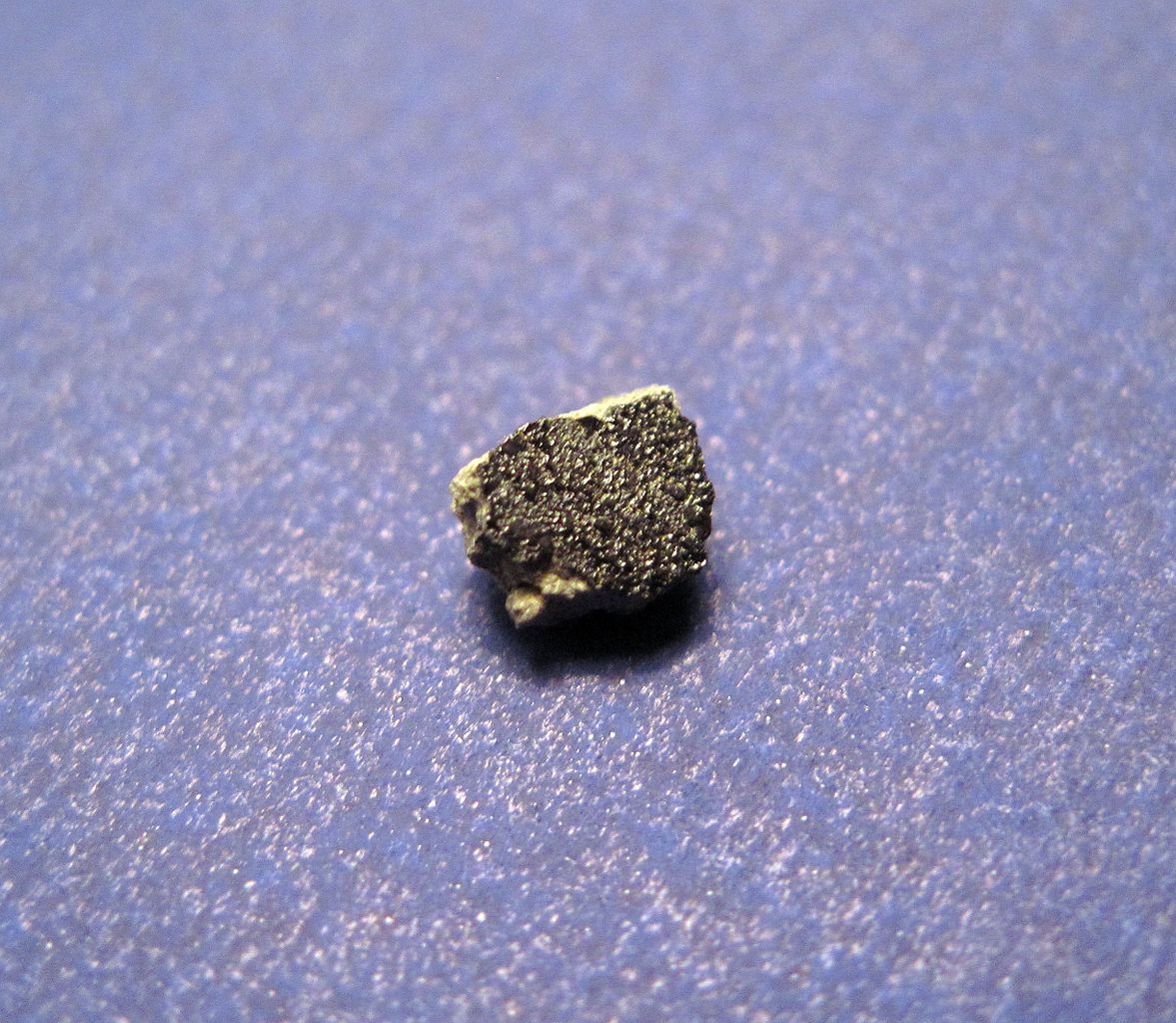
What causes so many meteorites to be found in Morocco?
According to Abderrahmane Ibhi, there are ‘three’ main causes for the abundance of meteorites found in Morocco. In the first place, there is “landscape”–meteorites can be easily found in windswept sand, where their dark color stands out. Arid climates also help preserve meteorites better than wet ones.
As a second point, “a well-distributed population increases the likelihood of individuals coming across them.” Thirdly, because of Morocco’s political stability, “it’s safer to walk around looking for meteorites in Morocco than it would be in most other countries.”
On the subject of cometary symbols found on Moroccan stones which look like dazzling orbs with long-tail ends, scientist Fernando Coimbra writes nine case studies of ‘cometary phenomena described in ancient rock art’ in the paper named ‘the sky on the rocks’ about ancient cometary and astronomical rock art.
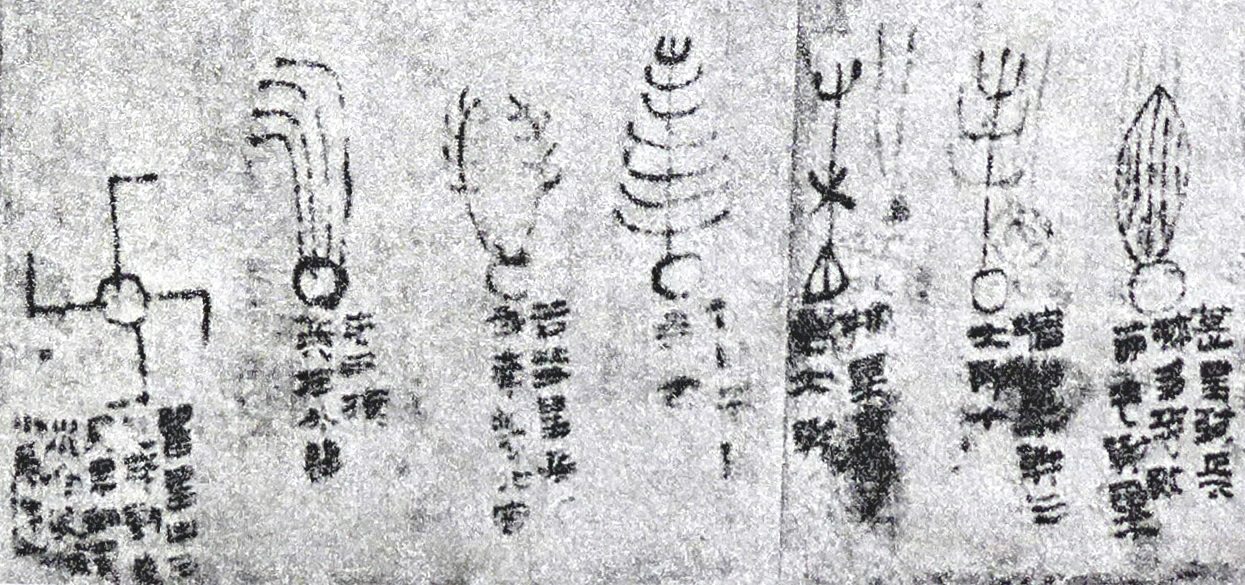
Fernando describes a series of ancient symbols contained in the Divination by Astrological and Meteorological Phenomena, commonly known as the Book of Silk, a record of 29 comets seen by Chinese astronomers during the Western Han Dynasty over a period of nearly 300 years from 202 BC to 9 AD.
With four lengthy tails, the second comet from the left looks exactly like one of the engravings found on Moroccan stones.
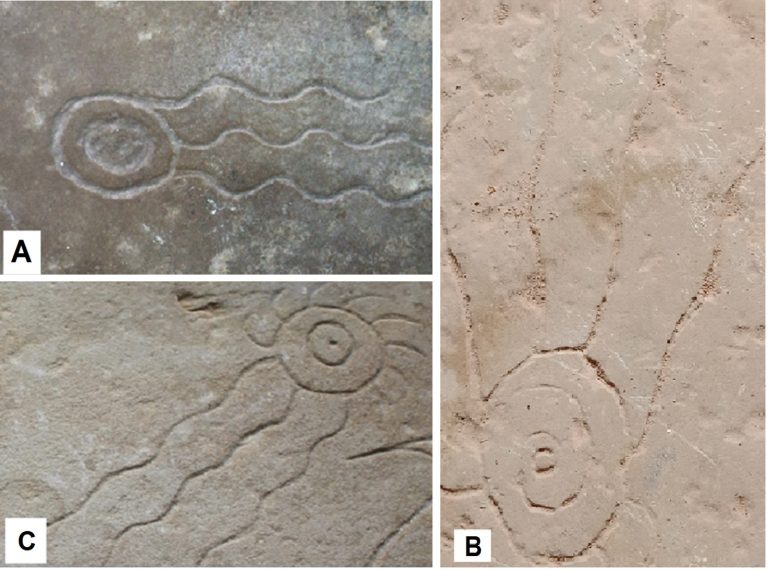
In the end, Ibhi and his team came to the conclusion that “these sculptures are those of a meteor, the three petroglyphs appear to represent the impact of a great meteorite that has frightened the inhabitants, and the artist has undoubtedly witnessed this astronomical event spectacular enough to be recorded on the rock.”
“Some Southern African populations have conceptually linked trance with comets and meteors”― J.F. Thackeray suggested in a note in 1988, Transvaal Museum, Pretoria.
When a streak-like object (comet or meteor) is depicted alongside human beings in some prehistoric paintings and engravings, it is possible that the portrayal is meant to represent conceptual associations with trance experience rather than a specific astronomical event or event sequence.




